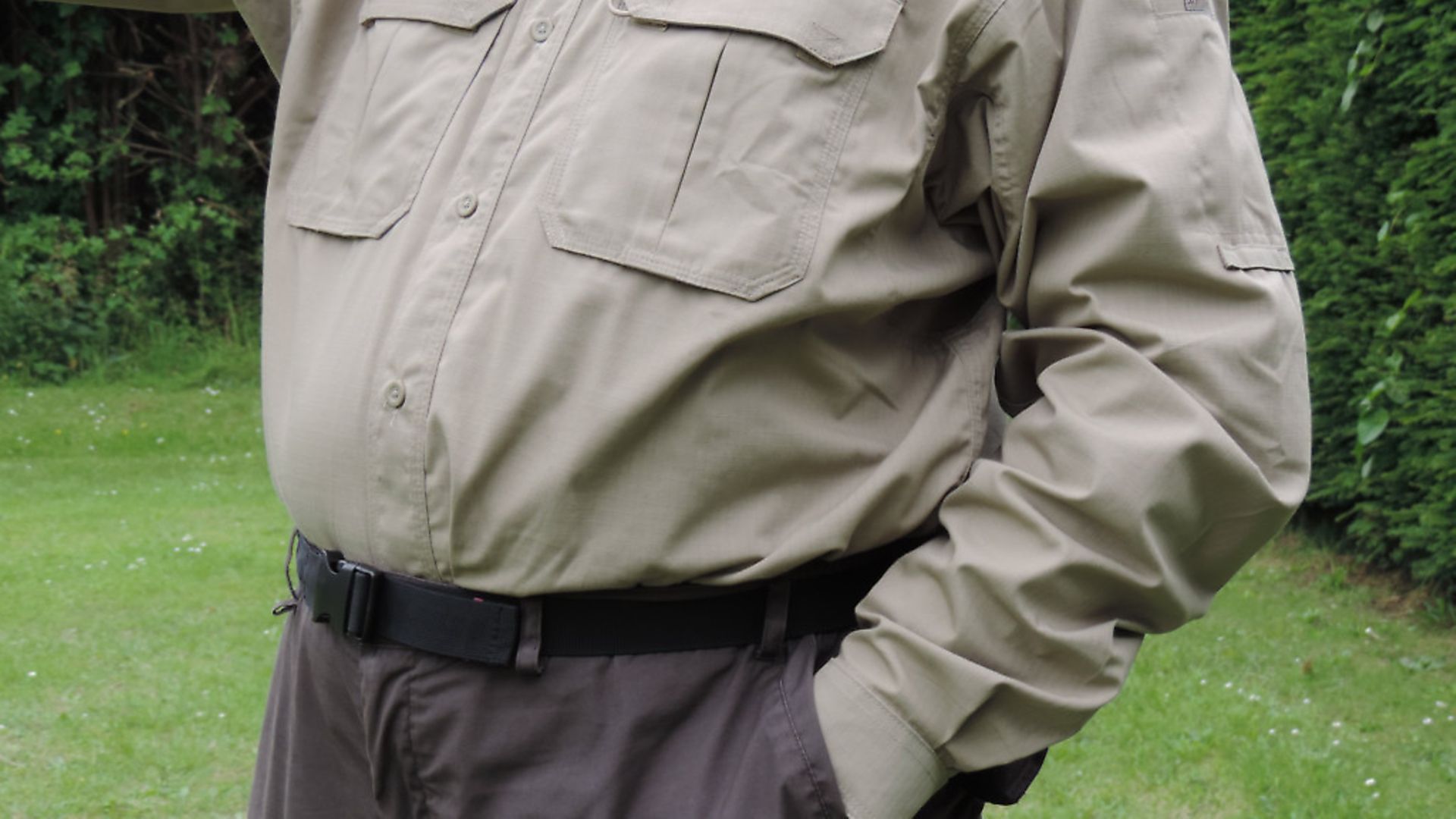Shooting an air pistol single-handed from the standing position is the hardest of all shooting positions to master, but ‘hardest’ does not mean ‘impossible’
 credit: Archant
credit: Archant
The very foundation of every shot fired is based around the way you present the rifle or pistol to the target. If you are uncomfortable or unstable, excess wobble will result, and the shot will have been wasted.
Shooting an air pistol single-handed from the standing position is the hardest of all shooting positions to master, but ‘hardest’ does not mean ‘impossible’. Just look at the scores attained by Olympic shooters at the highest level. Granted, not everyone has the time, patience, or will, to develop world-class skill, but borrowing some of the principles of target shooting will improve your own performance – and it all starts with the stance.
 credit: Archant
credit: Archant
Duelling origins
Formal target shooting with pistols has only been around since the 19th century. Prior to that, pistols were generally too inaccurate to practise with, and tended to be used at very short range toward adversaries, if at all. More were used to dispatch wounded animals than people, until rifled arms and repeaters made pistols more practical for the military. The exception to this was the aristocratic habit of duelling with pistols, and target shooting has its origins in this practice; gentlemen fought with their ‘duellers’ on the day they were ‘called out’ – or had to call another out in the defence of personal honour.
The duellist’s stance consisted of a sideways profile toward one’s adversary, to minimise the chances of a hit on a vital organ. In some cases, the shooting arm was presented bent at the elbow, to protect the ribcage, but the more conventional practice of extending the shooting arm was more widespread and practical. As well as protecting the vital organs of less rotund duellists, shooting single-handed with an extended arm in line with the shoulders is the most stable way of shooting one-handed, and that’s why target shooters still use this stance today.
 credit: Archant
credit: Archant
How to stand
If you are right-handed, the head is held straight and facing to the right, looking over the extended arm. Do not overstretch the neck muscles in an effort to turn the head too far, or stand ramrod straight, because repeating this consistently over a 60-shot match would soon result in discomfort and inaccuracy. Holding a pistol directly in front of the body, with one arm, is unnatural and engages too many muscles, which is why the side-on stance is used. Comfort is the key and you are more likely to consign a comfortable position to muscle memory than a poorer one.
The feet should be placed at approximately shoulder width apart, and roughly at a 45-degree angle to the target’s left, in the case of the right-handed shooter – lefties, please reverse. Some shooters find that angling their toes slightly inward helps to stabilise the position, but if the position is comfortable and on flat stable ground, it will form a secure foundation for all your other techniques. Try standing and pointing a finger at an imaginary target; you will notice that your body’s centre of gravity changes, and your extended arm will feel strained. For this reason, you will need to lean back, using the hip joint to counterbalance the weight of your outstretched arm.
 credit: Archant
credit: Archant
You only need one arm
The outstretched arm should be held out firmly enough to support the pistol, but no muscles are used to keep the arm rigidly straight. Again, doing so over time will result in muscle fatigue, so a relatively loose arm position is the key here. You will find the left arm is surplus to requirements during the aim and needs to be kept out of the way. Some shooters place it behind their backs, others loop a thumb into a pocket or belt loop, but I tend to let my arm hang, with a slight bend in the elbow, whilst touching my belt buckle. I have adopted this position for so long that I am able to forget my left arm is there until I need it to load a pellet into the pistol.
 credit: Archant
credit: Archant
More is more
Many rifle shooters dread standing shots, due to less stability, but they have two arms, a shoulder, the cheek and if using the match stance, bone structure to support their rifles. That is a whole lot more than the one arm that a match pistol shooter uses and that is one of the reasons I have enjoyed the challenge of air pistol shooting for almost four decades.
If you can shoot a pistol accurately using one hand, you are more than likely to excel at most other shooting disciplines because your technique will be honed to perfection. Anything less and you will not achieve good results with the pistol. You are unlikely to achieve consistently accurate results from the beginning, unless you are a gifted natural, but persevere and in time, you will see an improvement in your scores if you shoot at club level, or an increase in hits if you use these techniques on the plinking range.
I first started using match techniques with a vintage Webley pistol many years ago, and my perseverance paid off when I found myself dropping tin cans at 25 yards after just a few months of practice. Why not try it and see?